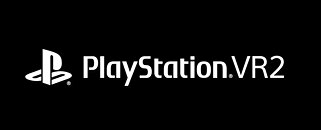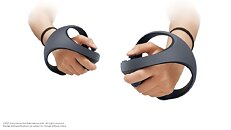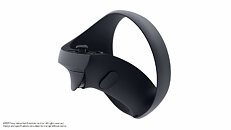Raevenlord
News Editor
- Joined
- Aug 12, 2016
- Messages
- 3,755 (1.25/day)
- Location
- Portugal
| System Name | The Ryzening |
|---|---|
| Processor | AMD Ryzen 9 5900X |
| Motherboard | MSI X570 MAG TOMAHAWK |
| Cooling | Lian Li Galahad 360mm AIO |
| Memory | 32 GB G.Skill Trident Z F4-3733 (4x 8 GB) |
| Video Card(s) | Gigabyte RTX 3070 Ti |
| Storage | Boot: Transcend MTE220S 2TB, Kintson A2000 1TB, Seagate Firewolf Pro 14 TB |
| Display(s) | Acer Nitro VG270UP (1440p 144 Hz IPS) |
| Case | Lian Li O11DX Dynamic White |
| Audio Device(s) | iFi Audio Zen DAC |
| Power Supply | Seasonic Focus+ 750 W |
| Mouse | Cooler Master Masterkeys Lite L |
| Keyboard | Cooler Master Masterkeys Lite L |
| Software | Windows 10 x64 |
Sony today has confirmed the first specs for its upcoming update of the original PlayStation VR hardware. The PlayStation VR2, as it's (predictably) named, will feature an entirely new display array consisting of dual OLED panels (2000 x 2040 per eye), enabling 4K HDR content to be directly beamed into the users' retinas. The panels enable a 110º field of view and up to 120 Hz refresh rates. The PS VR2 headset will now feature inside-out tracking, which means there's no need for external accessories: four cameras placed on the headset itself will take care of hand and positional tracking, with some help from the new Sense handheld controllers (which integrate the haptic feedback and adaptive triggers of the PS5 DualSense controller).
While wireless VR technologies have become more common, the PlayStation VR2 will require a single, USB Type-C physical connection with the PS5 console - and it's unlikely it will ever properly work outside Sony's ecosystem. This is partly due to Sony listing a number of new sensory technologies that are being integrated into its VR2 headset such as eye tracking, headset feedback, and 3D Audio (processed via the company's Tempest technology). Sony describes the eye tracking implementation as serving as a new possible input for game experiences, whilst also enabling technologies such as foveated rendering to enable higher performance to be extracted from the PS5 hardware. Allying foveated rendering and eye-tracking should bring about a much-needed breakthrough for VR performance - theoretically, the system can apply Variable Rate Shading (VRS)-like technologies according to the user's eye position, reducing rendering quality in line with the less detailed captures of humans' peripheral vision compared to the pupil's central focus point.



Headset feedback should also bring about new integrated ways to experience VR; Sony integrated a single built-in motor on the headset that "amplifies the sensations of in-game actions from the player". Sony say that pairing headset feedback with its Tempest 3D audio system will enable gamers to feel, for instance, "a character's elevated pulse during tense moments, the rush of objects passing close to the character's head, or the thrust of a vehicle as the character speeds forward."
All of this tech should get its time in the sun as soon as the PS VR2 products launch, right alongside the first confirmed VR experience for the PS5. Horizon VR: Call of the Mountain is expected to place players in Horizon: Zero Dawn character Alloy's shoes, as she explores a forest environment packed with saurian robots. What gameplay and interaction mechanics will make it unto the game are open questions as of now, but this seems like an incredible place to play with the headset's feedback and Tempest audio features, as well as eye-tracking.
Sony gave no information on pricing for its new PS VR2 headset and Sense controllers; however, a Chinese publication claimed that Sony was in the final throes of starting production of its new hardware as it scales production to meet a "end of 2022" release date.
View at TechPowerUp Main Site
While wireless VR technologies have become more common, the PlayStation VR2 will require a single, USB Type-C physical connection with the PS5 console - and it's unlikely it will ever properly work outside Sony's ecosystem. This is partly due to Sony listing a number of new sensory technologies that are being integrated into its VR2 headset such as eye tracking, headset feedback, and 3D Audio (processed via the company's Tempest technology). Sony describes the eye tracking implementation as serving as a new possible input for game experiences, whilst also enabling technologies such as foveated rendering to enable higher performance to be extracted from the PS5 hardware. Allying foveated rendering and eye-tracking should bring about a much-needed breakthrough for VR performance - theoretically, the system can apply Variable Rate Shading (VRS)-like technologies according to the user's eye position, reducing rendering quality in line with the less detailed captures of humans' peripheral vision compared to the pupil's central focus point.



Headset feedback should also bring about new integrated ways to experience VR; Sony integrated a single built-in motor on the headset that "amplifies the sensations of in-game actions from the player". Sony say that pairing headset feedback with its Tempest 3D audio system will enable gamers to feel, for instance, "a character's elevated pulse during tense moments, the rush of objects passing close to the character's head, or the thrust of a vehicle as the character speeds forward."
All of this tech should get its time in the sun as soon as the PS VR2 products launch, right alongside the first confirmed VR experience for the PS5. Horizon VR: Call of the Mountain is expected to place players in Horizon: Zero Dawn character Alloy's shoes, as she explores a forest environment packed with saurian robots. What gameplay and interaction mechanics will make it unto the game are open questions as of now, but this seems like an incredible place to play with the headset's feedback and Tempest audio features, as well as eye-tracking.
Sony gave no information on pricing for its new PS VR2 headset and Sense controllers; however, a Chinese publication claimed that Sony was in the final throes of starting production of its new hardware as it scales production to meet a "end of 2022" release date.
View at TechPowerUp Main Site



